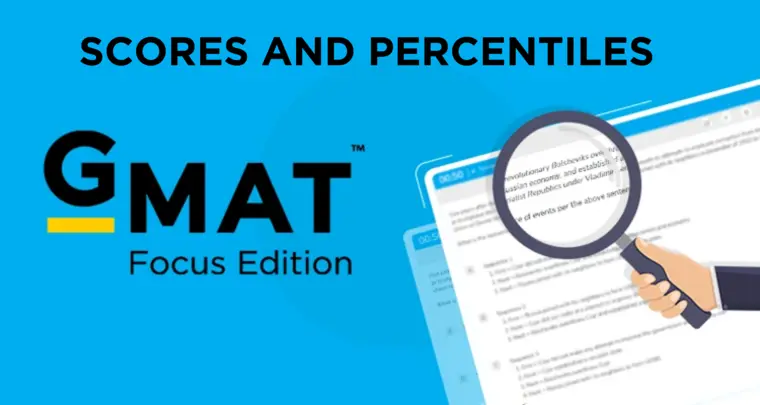Question: The price of a bushel of corn is currently $3.20, and the price of a peck of wheat is $5.80. The price of corn is increasing at a constant rate of 5x cents per day while the price of wheat is decreasing at a constant rate of (x√2 – x) cents per day. What is the approximate price when a bushel of corn costs the same amount as a peck of wheat?
A. $4.50
B. $5.10
C. $5.30
D. $5.50
E. $5.60
Solution Section:
Solution:
- Translate the problem requirements: We need to find the price when corn and wheat cost the same. Currently corn is $3.20 and wheat is $5.80. Corn increases by 5x cents daily, wheat decreases by (x√2 – x) cents daily. We need to find when these prices meet.
- Set up price equations over time: Express the price of corn and wheat after t days using their starting prices and daily rate changes.
- Find the meeting point: Set the two price equations equal to each other and solve for the time t when prices are equal.
- Calculate the common price: Substitute the time back into either price equation to find the price when they’re equal, using approximation where helpful.
Execution of Strategic Approach
- Translate the problem requirements Let’s understand what’s happening in everyday terms: We have two different grains with different prices that are changing over time. Think of it like two cars driving toward each other on a road – one starting from a lower position moving up, and one starting from a higher position moving down. We want to find where they meet.
Currently:
- Corn costs $3.20 per bushel (the cheaper option starting low)
- Wheat costs $5.80 per peck (the more expensive option starting high)
The prices change daily:
- Corn’s price goes UP by 5x cents each day
- Wheat’s price goes DOWN by (x√2 – x) cents each day
We need to find the price when these two meet – when a bushel of corn costs exactly the same as a peck of wheat.
Process Skill: TRANSLATE – Converting the word problem into clear mathematical relationships
- Set up price equations over time Now let’s track how each price changes day by day. If we call the number of days ‘t’, then:
Corn’s price after t days: Starts at $3.20 and increases by 5x cents per day Price = $3.20 + (5x × t) cents Converting cents to dollars: Price = $3.20 + $0.05xt
Wheat’s price after t days: Starts at $5.80 and decreases by (x√2 – x) cents per day Price = $5.80 – (x√2 – x) × t cents Converting cents to dollars: Price = $5.80 – $0.01(x√2 – x)t
- Find the meeting point The prices are equal when corn’s price equals wheat’s price. Setting our equations equal: $3.20 + $0.05xt = $5.80 – $0.01(x√2 – x)t
Let’s solve for t step by step: $0.05xt + $0.01(x√2 – x)t = $5.80 – $3.20 $0.05xt + $0.01(x√2 – x)t = $2.60
Factor out t: t[$0.05x + $0.01(x√2 – x)] = $2.60 t[$0.05x + $0.01x√2 – $0.01x] = $2.60 t[$0.04x + $0.01x√2] = $2.60 t × x[$0.04 + $0.01√2] = $2.60
Since √2 ≈ 1.414: t × x[$0.04 + $0.01(1.414)] = $2.60 t × x[$0.04 + $0.01414] = $2.60 t × x[$0.05414] = $2.60
Therefore: t × x = $2.60 ÷ $0.05414 ≈ 48.02
- Calculate the common price Now we substitute back into either price equation. Using the corn equation is simpler: Common price = $3.20 + $0.05 × (t × x) Common price = $3.20 + $0.05 × 48.02 Common price = $3.20 + $2.40 Common price = $5.60
Let’s verify with the wheat equation: We need (x√2 – x) × t = (1.414x – x) × t = 0.414x × t = 0.414 × 48.02 ≈ 19.88 Wheat price = $5.80 – $0.01 × 19.88 = $5.80 – $0.20 = $5.60 ✓
- Final Answer The approximate price when a bushel of corn costs the same amount as a peck of wheat is $5.60.
This matches answer choice (E) $5.60.
Common Faltering Points
Errors while devising the approach
- Misinterpreting the direction of price changes: Students may confuse which price is increasing and which is decreasing. The problem states corn price is “increasing” at 5x cents per day and wheat price is “decreasing” at (x√2 – x) cents per day. Some students might accidentally reverse these directions when setting up their equations, leading to corn decreasing and wheat increasing.
- Confusion about what the question is asking for: The question asks for “the approximate price when a bushel of corn costs the same amount as a peck of wheat.” Students might misinterpret this as asking for the number of days until the prices are equal, or they might think they need to find both individual prices rather than the common price at the meeting point.
- Unit conversion oversight: Students may forget that the rate changes are given in cents per day while the initial prices are in dollars. This could lead them to set up equations mixing cents and dollars without proper conversion, resulting in equations like $3.20 + 5xt instead of $3.20 + $0.05xt.
Errors while executing the approach
- Algebraic manipulation errors when combining terms: When simplifying the equation t[$0.05x + $0.01(x√2 – x)] = $2.60, students often make mistakes in distributing and combining like terms. They might incorrectly calculate $0.05x + $0.01x√2 – $0.01x, forgetting to subtract the $0.01x term or making sign errors.
- Approximation errors with √2: Students may use an incorrect approximation for √2 (such as 1.4 instead of 1.414) or make calculation errors when computing $0.01√2. This leads to an incorrect coefficient in the final equation and subsequently wrong values for the product tx.
- Arithmetic errors in the final calculation: Even with the correct setup, students may make computational mistakes when calculating tx ≈ 48.02 from the division $2.60 ÷ $0.05414, or when finding the final price $3.20 + $0.05 × 48.02 = $5.60.
Errors while selecting the answer
- Selecting based on intermediate calculations: Students might accidentally select an answer choice that matches one of their intermediate values, such as the initial price difference ($2.60), the value of tx (≈ 48), or the price increase amount ($2.40), rather than the final common price of $5.60.
- Rounding confusion: Since the question asks for an “approximate” price and the calculated answer is exactly $5.60, students might second-guess themselves and choose a nearby value like $5.50 (choice D) thinking that their exact calculation must be slightly off and needs rounding














